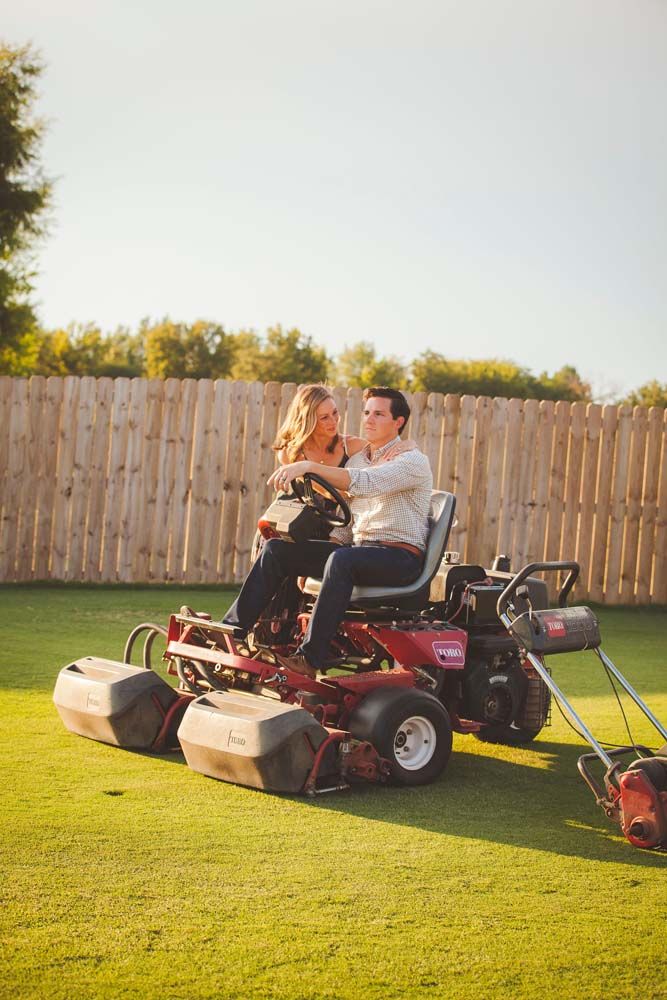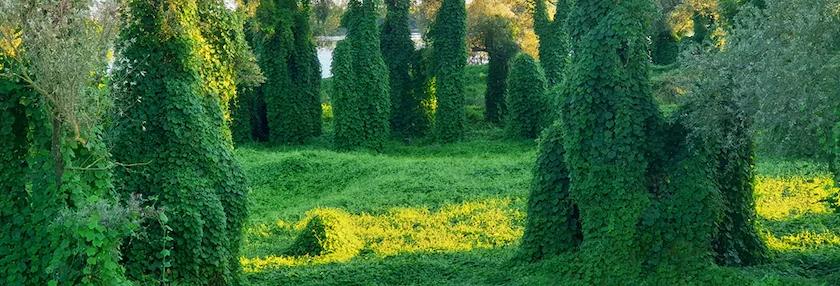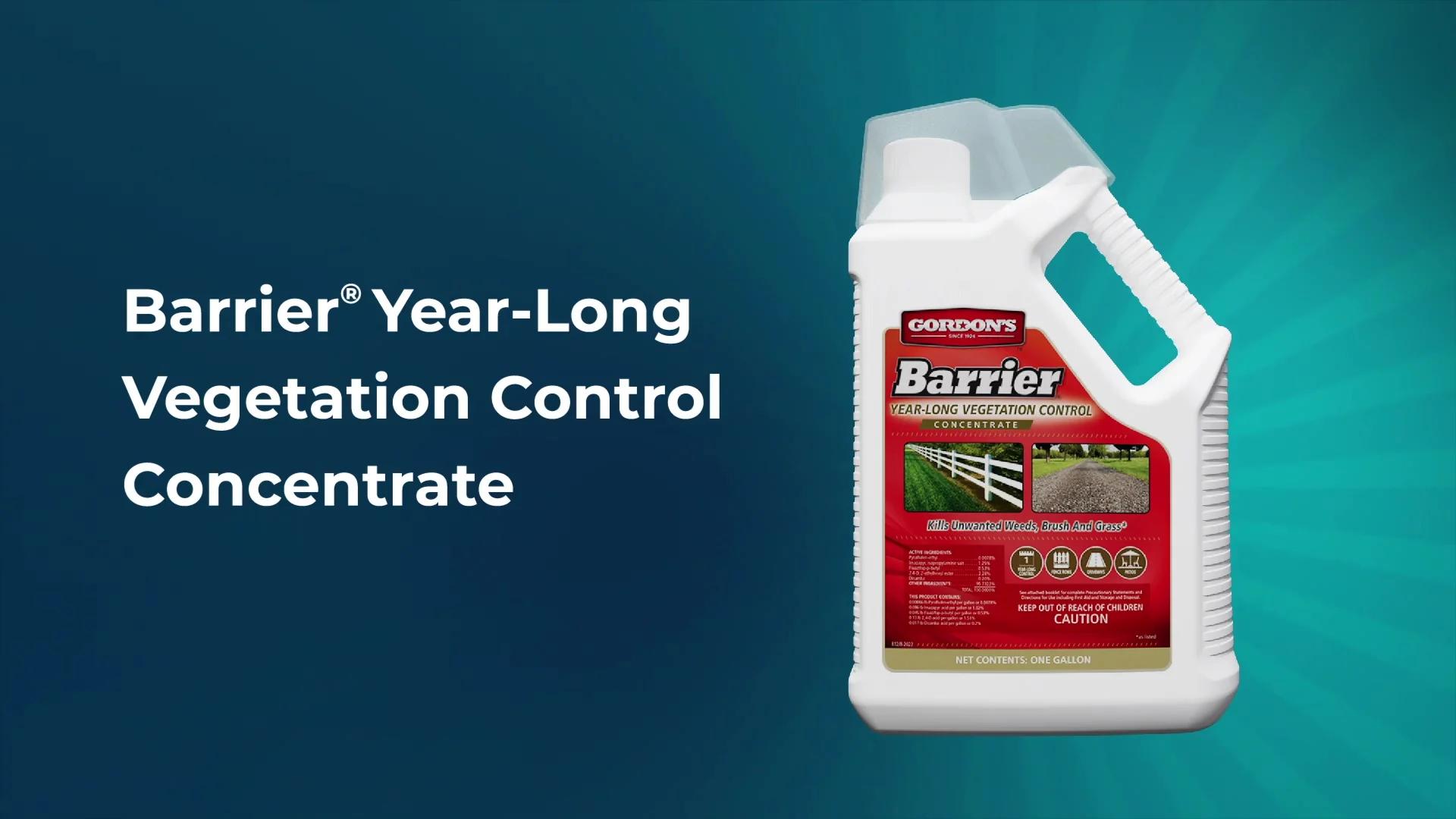Big or Small, They Work Everywhere
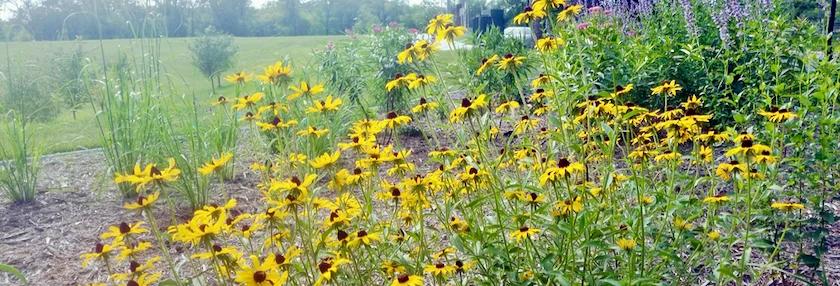

Micro pollinator plantings build crucial habitat
It’s no secret pollinators need our help. While it would be cool to have many acres converted to native prairies, small acreage owners don’t have that luxury.
The answer? Micro pollinator habitats, those that can be measured in square feet rather than acres, can be installed on nearly any property.
They can be incorporated in businesses, schools, urban homes, parks, and just about any location ripe for landscaping.
Many cities even allow micro-plots on boulevards—a properly planned and installed micro-pollinator plot requires little watering.
Proper planning ensures success
The first step is researching the plants native to your local region. I live in southeastern North Dakota, an area that was historically tallgrass prairie. It is critical to understand the natural history of the area, as it’s not-ecologically-incorrect to plant non-native species that provide little for pollinators.
As the Director at a Soil Conservation District, my team and I tried to establish micro pollinator plots using seed. It was unwieldy, labor-wise: this can take years for plants to truly establish and continual weed pressure required hours of hand-pulling.
The solution was to use plugs and potted plants. Grown in a greenhouse and planted directly into the ground, the plants establish during the first growing season.
Another important consideration is local ecotype plants. I am very fortunate to have a native plant greenhouse in the area that grows locally harvested forbs and grasses. The United Prairie Foundation propagates the plants from seed collected from remnant native prairie.
A big bluestem grown from a seed harvested in Illinois would be different than a big bluestem grown from a seed harvested in North Dakota.
Native plant and seed suppliers can provide the buyer with origin information.
Prepare the location
Using flagging or lath, mark out the area that will be turned into the prairie oasis. The soil can be tilled up or black woven weed barrier fabric can be laid down over the sod and pinned into place with steel fabric staples.
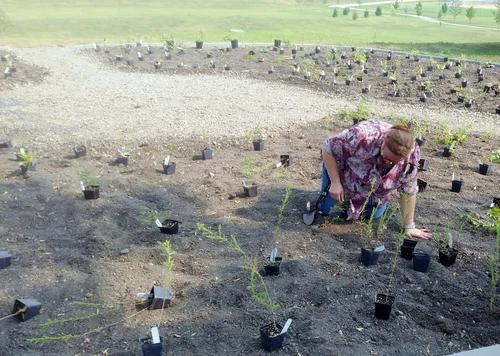
If the area is tilled, the weed barrier should be laid over the soil once it is dry. Clumpy, wet soil hardens into concrete-like chunks if not allowed to dry before being covered.
Woven weed barrier fabric provides both moisture retention and weed control. It can be left exposed, but looks better to cover it with wood chips. Wood mulch can be placed over the tilled soil as well, for those that prefer not to use woven fabric.
Layout
When determining species and location within the planting there are a few considerations you should remember: bloom period, height, layering, and soil conditions.

The time of the year a forb blooms is referred to as the bloom period. It’s important to include ones that bloom in the spring, summer, and fall. Pollinating insects need the sustenance provided by the flowers during the entire growing season. By loading up the planting with a blooming imbalance, there will be more time without blooms than with flowers.
Height and layering is another important factor in the plot layout. In a natural tallgrass prairie, there is a diverse tapestry of plants at heights ranging from six inches to over six feet. Looking across the landscape, the layering would form a solid wall of vegetation.
Too often pollinator plots look too organized, with species in pockets and heights arranged like a school class photo. This is a matter of personal taste, but a more natural, cascading series of heights looks the best.
Soil conditions are very important when choosing species. A species best suited for wetter soils will struggle in dry, sandy soil. Conversely, a grass that prefers dry, sandy soil will be anemic at best in wet soils. The area can be amended to suit the species as well.
Overall, it’s usually best to work with the soil rather than trying to shoehorn species that don’t quite fit.
Planting
Once the fabric is rolled out and stapled down, take each plug, in its container, and lay them out. Keep in mind, the plants are small and don’t represent the mature height. It can be helpful to sketch out the layout on a piece of paper, but, as a more visual person, I like laying them out. While there is no hard and fast rule for spacing, two-foot centers work well.

Cut into the fabric either using a carpet knife or burning with a Bertha-style torch head. Plant the plugs in the same manner as annual flowers or garden plants. Once the plants are in the ground, covering the fabric with an inch thick layer of wood mulch helps hide the unsightly black covering.
Stand back and…wait
During the first growing season, the plants need to be watered only as needed. The roots of the tender young life are delicate and using a tremendous amount of energy to establish in the new soil. Resist the urge to fertilize—young plants can easily be burned by too many nutrients.
There will be weed growth through the holes and next to the plants. When small, the weeds can be gently pulled from the soil, but larger weeds should be cut off at the ground level with a shears.
Pulling a weed with a large root mass disturbs too much soil and can bring the native plant out of the soil along with it.
A mature pollinator will require little maintenance. The established plants draw moisture from deep in the soil, requiring watering only during periods of drought. Leave the above ground plant matter alone in cold months, as many pollinating insects overwinter on the debris.
In the spring, as the new growth begins to push out of the soil, simply snip off the dead plants at the soil level.
Why plant native?
Native plants will provide beauty, pollinator habitat and bring a small piece of the prairie heritage to any property. Micro-prairie plots can be tucked into a corner of a city lot or the front yard of a country home. No matter how big or small, micro-prairies work anywhere!
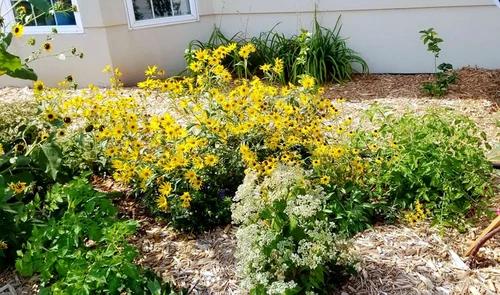
Native tallgrass prairie grass and forbs to consider
Big Bluestem: A tall warm season grass, Big Bluestem turns a purplish color in the fall with m mature plants can reach a height of 8’ Big Bluestem is widely adaptable to a variety of soil conditions.
Canada Wild Rye: A cool-season grass, Canada Wild Rye is a native tuft-forming species that grows between 3’ to 5’ tall. Canada Wild Rye will grow in a wide range of soil types and is often planted on disturbed sites.
Buffalo Grass: Buffalo Grass is a native warm-season grass that grows low to the ground, only reaching 10” in height. Very tolerant to drought and hot temperatures
Prairie Phlox: Prairie Phlox blooms in the spring with a profusion of pink to purple flowers on stems that grow to 20”.
Swamp Milkweed: The United Prairie Foundation president calls the Swamp Milkweed the perfect native pollinator plant. Swamp Milkweed stays where it is planted offering pink flowers during the summer .
Showy Goldenrod: A fall blooming plant, the Showy Goldenrod grows to 3’ tall and explodes into long rods of yellow flowers as the season cools down.
Black-eyed Susan: A summer blooming flower, the Black-eyed Susan is a forb no micro-pollinator plot should be without. This native will self-seed and thrive in nearly any soil condition or location, as long as there is full sun.
About the author
Jeffrey Miller lives with his significant other Melanie and their four children at Cottonwood Bend Farm, on the banks of the Sheyenne River in eastern North Dakota. The Director of the Cass County Soil Conservation District by day, he works on their homestead in his free time by writing, growing food, and trying to keep the chickens happy.
Get more ideas from a pinterest.com page
https://www.pinterest.com/growitbuildit/micro-prairie-native-plant-pollinator-garden/
See a suburban lawn become a micro prairie
Tags:Garden & Landscape

Acreage Life is part of the Catalyst Communications Network publication family.







